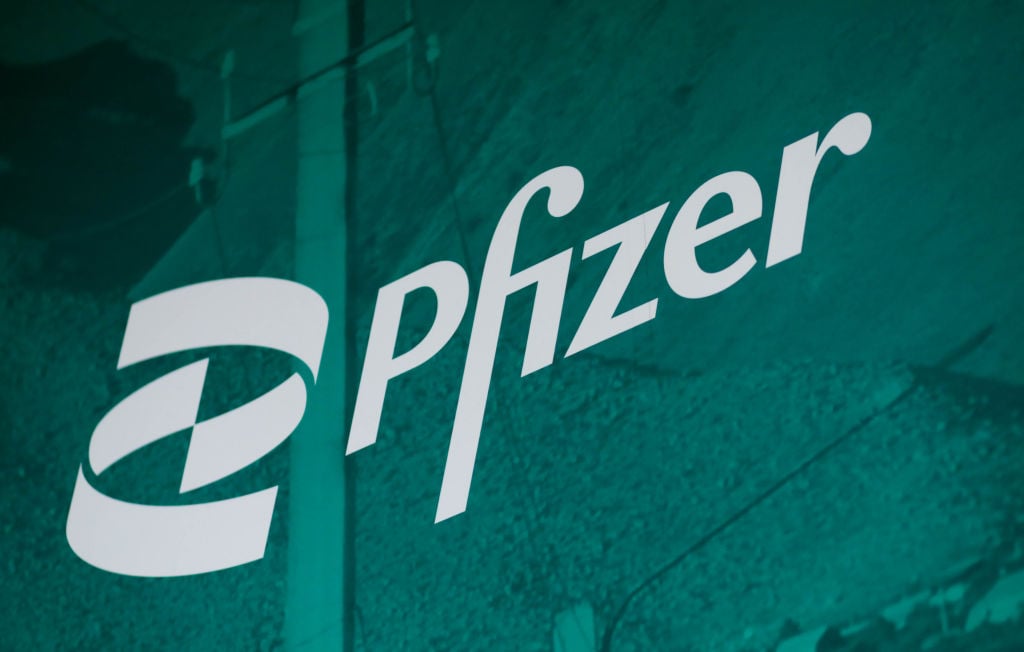Johnson & Johnson (JNJ +1.87%) kicked off this earnings season with a grim outlook for its pharmaceutical business, and it looks like the trouble has spread to its big pharma peers. More recently, AbbVie (ABBV +0.32%) and Pfizer (PFE 0.61%) told investors not to expect a great deal of sales growth in 2019.
Are these isolated incidents or is the entire pharmaceutical industry in for a year of disappointment? To answer that we need to understand why they're predicting slower sales growth in the first place. Here's what you need to know about the soft-guidance bug that's spreading throughout the biopharmaceutical industry.

Image source: Getty Images.
1. Johnson & Johnson: Payer pushback
Check out the latest Johnson & Johnson earnings call transcript.
The world's largest healthcare conglomerate kicked off earnings season by telling investors its U.S. pharmaceutical segment is trying to walk up an escalator that's going down. Johnson & Johnson made regular price hikes for successful drugs in 2018, but the net price it actually received after insurers applied discounts and rebates fell between 6% and 8% last year.
Overall, 2018 was a pretty good year for Johnson & Johnson's U.S. pharma division. Despite lower net pricing, higher volume drove U.S. pharmaceutical sales 8.4% higher.
In 2019, though, Johnson & Johnson expects total annual sales to fall 1% to $80.8 billion at the midpoint of its guided range. Net prices sliding across the pharmaceutical segment isn't the only headwind Johnson & Johnson faces right now. A rising dollar is expected to knock about $1.2 billion from reported sales this year.
Sales of the company's top-selling product, Remicade, slid 15.7% to $5.3 billion last year, due to biosimilar competition that probably won't subside soon. Zytiga sales reached $1.8 billion last year in the U.S., but generic versions of the prostate cancer tablet launched late last year. Unlike biosimilars, sales of small-molecule drugs often fall by more than half during their first year of generic competition.

Image source: Getty Images.
2. AbbVie: Biosimilar pressure
Check out the latest AbbVie earnings call transcript.
AbbVie hasn't complained much about pushy U.S. insurers demanding higher rebates, although it probably could. Instead, AbbVie's softer-than-expected outlook for 2019 is the result of stingy end payers throughout Europe.
Biosimilar versions of AbbVie's top-selling anti-inflammatory injection, Humira, went on sale throughout the EU in the middle of the fourth quarter. Compared with the previous-year period, international Humira sales fell 17.5%, to $1.3 billion.
At around 15% of total revenue, sagging international Humira sales will create a headwind that AbbVie can probably overcome. In 2018, U.S. Humira sales rose 10.7% to $13.7 billion, and this huge revenue stream will probably continue growing until 2023.
AbbVie thinks biosimilar competition will reduce total sales by around $2 billion this year, which will probably be offset by a couple of blood cancer drugs that recently received some important label expansions. AbbVie could also launch two potential blockbusters before the end of the year and, if approved, total sales could rise by single digits in 2019.

Image source: Getty Images.
3. Pfizer: Lyrica pain
Check out the latest Pfizer earnings call transcript.
Pfizer's top line rose just 2% in 2018, and in 2019 the company expects total revenue to remain flat. Altogether, generic competition for older drugs is expected to reduce total sales by $2.6 billion this year.
One of Pfizer's top sellers, Lyrica, loses U.S. market exclusivity in June, and it's going to sting. Sales of the nerve-pain drug reached $4.9 billion last year, which was about 9% of Pfizer's total revenue for the period.
Pfizer really isn't exposed to much biosimilar competition -- in fact, it's one of the companies applying pressure. Some of Johnson & Johnson's Remicade losses are a result of competition from Pfizer's Inflectra, a biosimilar version of the popular injection priced at a significant discount.
Don't let go now
Although competition for drugs that lose market exclusivity is a common theme here, these are company-specific events. When it comes to rebate pressure, we really can't say much about AbbVie and Pfizer because they haven't unveiled their gross-to-net-price differences the way Johnson & Johnson has.
| Company | Forward PE Ratio | Dividend Yield | Cash Dividend Payout Ratio |
|---|---|---|---|
| Johnson & Johnson | 15.2 | 2.7% | 51% |
| AbbVie | 8.9 | 5.5% | 43% |
| Pfizer | 13.4 | 3.5% | 51% |
Data source: Yahoo! Finance.
Johnson & Johnson, AbbVie, and Pfizer may be heading into a rough patch caused by patent expirations and other threats, but that doesn't mean you should let go of their shares right now. All three big pharma stocks are trading at below-average multiples of their earnings expectations for the year ahead, and their dividend programs are well funded.
It isn't easy watching your stocks flounder for a year or longer, but you can count on these three to raise their quarterly payouts going forward. Johnson & Johnson hasn't gone a year without raising its payout since JFK was in office, and it's hardly against the wall now.
Johnson & Johnson used just 51% of free cash flow to make dividend payments over the past year, which means it can keep raising the payout even if total revenue goes nowhere for years on end. AbbVie and Pfizer offer even higher yields right now that could contribute to market-beating returns over the long run.








